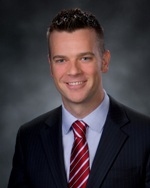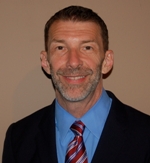Defining or Refining a Healthcare Workforce Planning Model
Preparing for a future with increased demands for healthcare services, hospitals and health systems must develop a workforce-planning model.

Rick Sherwood recommended directly linking workforce planning models to the organizational strategy.
“Having a workforce strategy or plan is something we recommend,” said Rick Sherwood, a member of the Towers Watson hospital industry group.
The healthcare workforce plan should directly link with the organizational strategy, he advised. Secondly, Sherwood suggested gaining a good understanding developed through analytics about the supply and demand of talent, and then coming up with a plan to address the gaps identified through the analytics. Leaders also must consider whether the organization has growth plans or needs to adjust to healthcare reform.
Most large employers have developed workforce plans, including Penn Medicine in Philadelphia, but many smaller hospitals may not think as strategically. James Ballinghoff, RN, MSN, MBA, chief nursing officer at Penn Presbyterian Medical Center in Philadelphia, said he considers a plan essential to reduce the time it takes to fill vacancies and to prepare for future needs.

Pamela A. Thompson, MS, RN, CENP, FAAN, recognized many systems have planning models in place, but encouraged them to take a comprehensive look at them.
“Due to how much healthcare delivery is changing, workforce needs in hospitals are going to change, too, and hospitals and health systems should focus on how their current and future workforce will fit into new care delivery models,” said Pamela A. Thompson, MS, RN, CENP, FAAN, chief executive officer for the American Organization of Nurse Executives (AONE).
The AHA Workforce Center, a joint effort of the American Hospital Association (AHA), the AONE and the American Society for Healthcare Human Resources Administration, has conducted a literature review, interviewed executives, and developed a white paper and an assessment tool to help organizations create an effective model.
“This tool offers a hospital leadership team the opportunity to examine their current data, develop strategies around hiring and retaining their workforce, implementing their strategies, and then evaluating, on an ongoing basis, how their strategy is working,” Thompson continued.
Sherwood praised the AHA for publishing the white paper and raising awareness, but cautioned that workforce planning must be a rigorous process.
“The AHA piece is a great place to start, but it’s just a start,” Sherwood said.
The report calls for healthcare organizations to focus on: inclusion of data and analysis of current and future needs, including workforce competencies; developing a strategy; creating pipelines for future workers; and evaluating and monitoring the effectiveness of the plan.
The AHA report said the “most important component in creating a WPM [(workforce planning model)] strategy is obtaining buy-in from senior leaders or key stakeholders who will support the process.” But then the organization should openly communicate the plan to employees and invite feedback.
In preparing for the future, the report recommends developing partnerships with colleges and high schools, health departments, government workforce boards, foundations, and other community organizations to prime the pipeline.
Penn Presbyterian starts the process early with its Penn Medicine High School Pipeline program, which allows the students to shadow employees and learn more about healthcare careers. In addition, it has affiliations with many nursing programs. That allows the hospital to identify good candidates for its graduate nursing positions and residency programs.
Drexel University and Penn Presbyterian have developed a co-op program, in which students work for Penn as a nursing assistant.

James Ballinghoff, RN, MSN, MBA, said a pipeline for future hires is extremely important.
“It gives them exposure to the real-life profession, and it gives us an opportunity to try them out,” Ballinghoff said.
To address more urgent needs, Penn Presbyterian develops a pipeline by hiring resource pool nurses. Those nurses might want to move into a full-time position when one opens up.
“If you have a robust pool you can fill a position on a temporary basis,” Ballinghoff said.
Sherwood reported that most hospitals are doing a good job of priming the pump with relationships with nursing schools and the community.
“Where we see the system trip up is retaining those nurses,” said Sherwood, who advises beefing up onboarding and mentorships with more seasoned nurses. “Developing them and retaining them is the trickier step.”
Penn Presbyterian enjoys a low turnover rate. It offers clinical advancement and recognition programs to give nurses opportunities to continue to grow within the profession. The health system also offers leadership and mentoring programs. The Magnet hospital’s shared-governance and unit-based councils offer opportunities to develop leadership skills.
Penn benchmarks against a national database of quality indicators to see where it is with that metric and surveys nurses about staffing, scheduling and other issues.
“We use that information to develop an action plan for the following year to improve on those areas,” Ballinghoff said
Evaluation is the last, and a very important step. Hospitals need to audit the plan--including recruitment and retention on an annual basis. Sherwood suggested health systems try different approaches in different hospitals, evaluate in a year, and then implement the program that works the best system-wide.
“It is also critical that they take a comprehensive look at their plans with input from a variety of internal and external resources to be prepared with a workforce that will be able to respond to all patient care needs,” Thompson said.
Click here to access the AHA white paper and evaluation tool.
© 2013. AMN Healthcare, Inc. All Rights Reserved.


